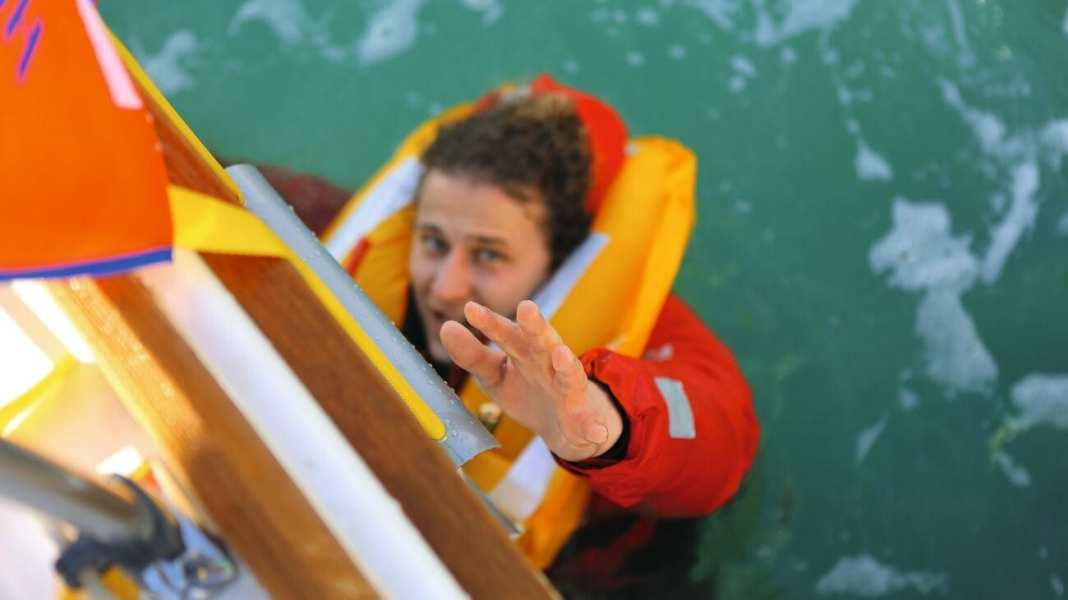
There is a sufficient number of life-saving appliances on many yachts in this country, and in some cases entire aft baskets are equipped with rescue systems and rescue collars. That is commendable. However, very few owners and crews are likely to have actually tried out their system. It is only when a person has gone overboard that it becomes clear whether the rescue equipment can be used. In case of doubt, that is too late.
A look at catalogues and consultations with equipment suppliers are of little help when it comes to finding the best system for your yacht and crew. Although some products are very similar, the prices of the more than 20 recovery aids available on the German market range from just under 50 to 200 euros. Reason enough to take a closer look at the rather confusing market and test the products in practice.
In general, the products tested can be divided into three classes:
- Rescue loops usually with foldable, padded buoyancy loop, leash and bag/box
- Rescue collar with fixed buoyancy body, line, bag, some with light
- Lifelines with loop, leash and bag
In order to understand the individual test aspects and criteria, it is first worth taking a look at the process of a "man overboard rescue operation".On the next page we therefore present various manoeuvre sequences.
Recovery manoeuvre on the water: circle vigorously!
A further pre-sorting of the test candidates can be achieved via the task to be accomplished: Whilst the sling systems and throw lines are designed to make contact with the casualty and bring them back on board, rescue collars are not suitable for rescue!
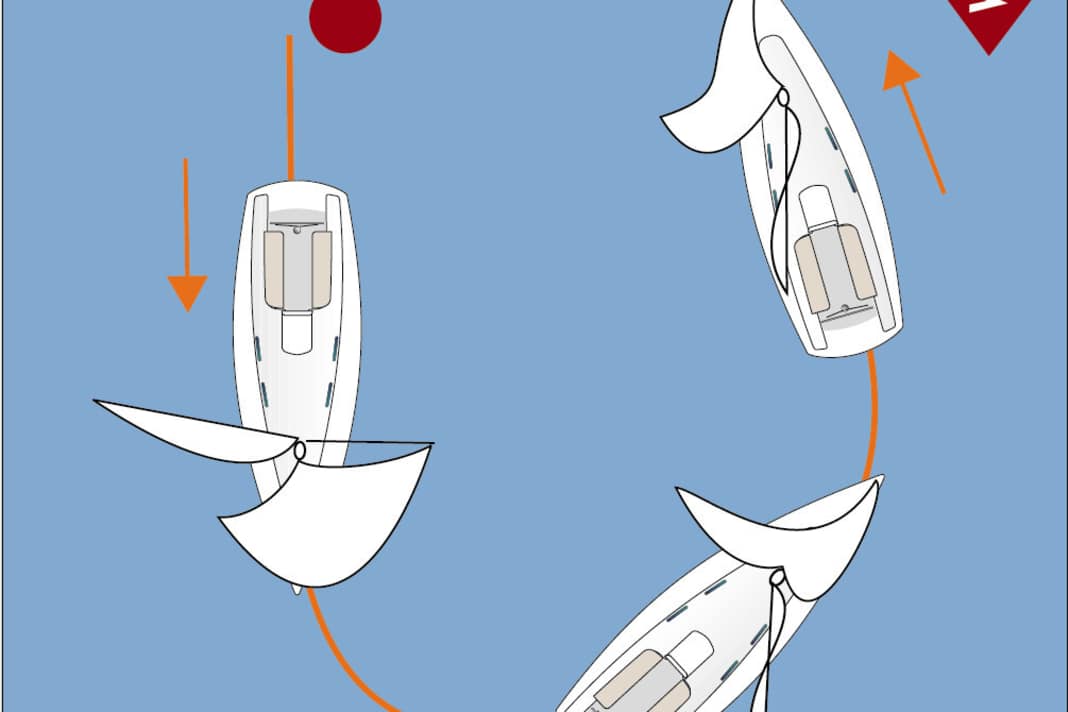




This means that the person can be pulled to the boat, but then has to climb the swim ladder under their own steam or be brought on deck using another rescue technique. To make matters worse, collars are difficult or impossible to combine with an inflated lifejacket. None of the systems tested can be put on properly in combination with a lifejacket. This means that waistcoat wearers usually only benefit from the collar by not losing contact with the boat.
We have schematically illustrated four types of manoeuvre in a series of pictures. There is no such thing as a perfect man-overboard manoeuvre. Depending on the boat, crew, wind and waves, the skipper must decide in favour of a Q-tack, quick stop or another variant. Each has advantages and disadvantages.
The test results
Back to the test of the recovery systems: By circling, the collar automatically describes a tighter radius than the yacht, which means that sooner or later the casualty will get hold of the line or the collar. The longer the line is and the more resistance the collar generates in the water, the tighter its orbit becomes, with the result that contact with the person is made more quickly.
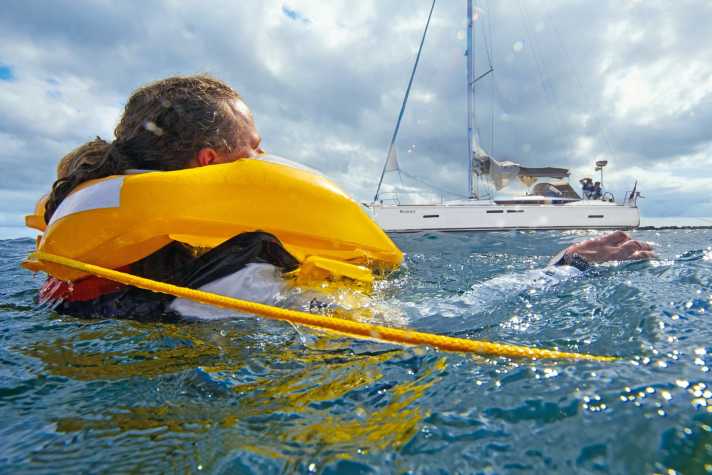
The systems tested were equipped with line lengths of between 27 and 42 metres. With an initial lateral distance of around twelve metres to the person, our test subject managed to grab the line after two and a half circles at the latest. Important: The towing behaviour is speed-dependent. For this reason, we carried out the tests at a speed of around three knots. If you manoeuvre more slowly, it becomes more difficult to get the loops into a tight bend, as they do not undercut and generate too little resistance. Click here for the complete test of 5 rescue collars, 3 throw lines and 10 rescue loops.
Rescue collar
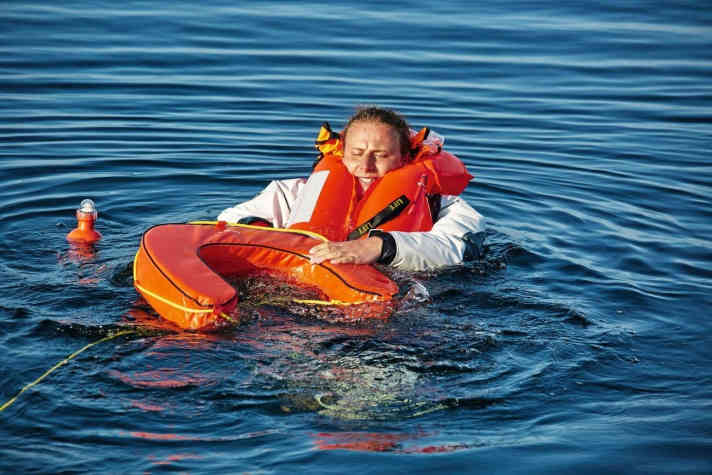
At first glance, the large, clearly visible collars appear solid and uncomplicated. However, the operation of one model was cumbersome and surprisingly unintuitive, and the instructions supplied with another model were even confusing. Fastening the packs, which were quite bulky due to the large collars, also caused problems. The most serious disadvantage, however, was that none of thefive tested modelswas designed for rescue. The rescue of an MOB always ends with a fixed collar on the side of the vehicle.
The test summary: The Swede Buoy model from Baltic was particularly convincing in the rescue collar comparison. However, even here the attachment is awkward. The line ran out well during the manoeuvre and the ring was very easy to direct. Recovery only possible with a lift strap. With 77 out of a possible 100 points, the Swede Buoy is the test winner. Click here for the detailed test results (incl. test of 10 rescue loops and 3 lifelines).
Rescue loops
The rescue loops want to score points with the ability to proceed directly to the rescue after pulling in. They must be sufficiently robust to hoist a heavy, exhausted or even unconscious person on board without their assistance. This feat of strength is only possible with the support of a rescue buoy or winch. In full gear and with plenty of water in his oilskin, the test person weighed easily 100 kilograms. Fortunately, our test boat, a Sun Odyssey 409 from 1st Class Yachts in Flensburg, was equipped with an electric halyard winch, which is why we pulled it out of the water using a main or spinnaker halyard.
However, this requires improvisation, as none of the systems have a hoisting eye that can be reached from the deck! Any attachment points on the sling or the recovery loop of the lifejacket are almost impossible to reach from on board, even in relatively smooth water, if the person is floating amidships alongside the yacht. The loop opening must also be large enough, as there is no time for awkward opening.
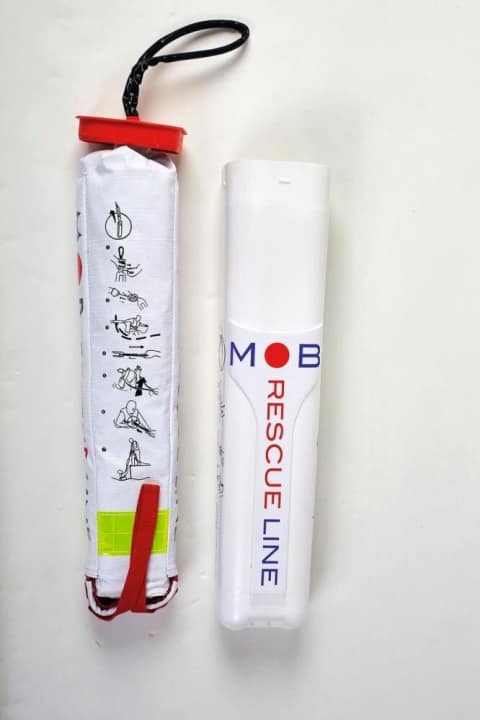
The short summary of the test: The Lifesling II rescue sling from Westmarin delivered consistently good results. The system is easy to attach and deploy and provides good manoeuvrability. The collar is easy to put on and fits well. The recovery also worked excellently with life jackets. In addition, the Lifesling II has a buoyancy of just under 11 decanewtons and fulfils both the safety requirements of the Isaf and the guidelines applicable on Lake Constance. However, this comes at a price; at €135 RRP, the sling is almost three times as expensive as the equally good model from Estonian manufacturer Lade Oy.
Its system is sold by A. W. Niemeyer as well as Compass and Marinepool. It comes in a solid, well-closing bag and won the test for value for money. Click here for the detailed test results (incl. test of 5 rescue collars and 3 lifelines)
Lifelines
Lifelines are simpler in the truest sense of the word. There is even no padding at the end of the loops and the complete packages weigh barely two kilos. On the other hand, they tend to be even quicker to throw, so that contact can be made even without circling. What also applies here, however, is that you only have one attempt at casting, as the line has to be cleared and repacked afterwards. If you don't make contact, it is better to simply tie the casting line to the boat and perform a circling manoeuvre. When towed, the tested lines behave like retrieval loops, allowing safe contact to be made with the casualty. As the empty line bags act like small floating anchors, the throwing lines can sometimes be manoeuvred better and circling is quicker than with some loops.
However, the recovery straps on the throw lines hardly provide any buoyancy. However, this is not necessarily a disadvantage when used in conjunction with a lifejacket, as the lack of foam padding makes the harness easier to put on. Only the visibility of the loop in the water is poorer than with systems with thick signal-coloured padding.
The short summary of the test: All models fulfil their purpose, the test results of the three models were all satisfactory with 74, 75 and 76/100. However, anyone who thinks that the minimalist line systems are significantly cheaper is mistaken. The Seculift model from the manufacturer Secumar costs around 160 euros at mail order companies, while the throw line of the

